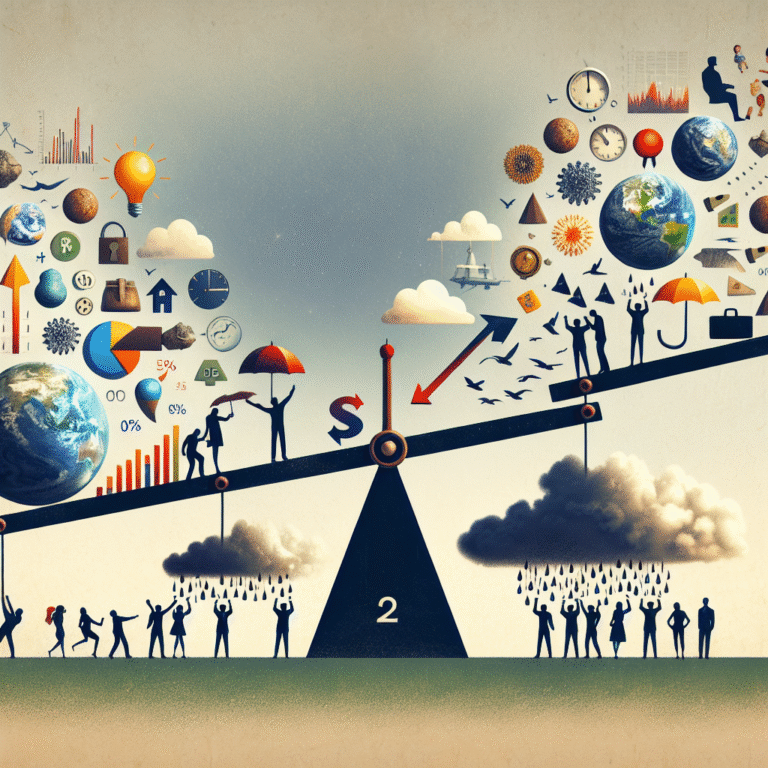
Introduction
In an era where data reigns supreme, understanding how to harness big data has become pivotal in shaping decisions across various fields—from healthcare to marketing and beyond. As organizations strive to gain deeper insights from ever-expanding datasets, observational studies have emerged as a crux of modern research methodologies. But why is this blend of big data and observational research so essential?
As we dive deeper into the topic of "Harnessing Big Data: The Role of Observational Studies in Modern Research," we will explore insightful case studies, examine the potential advantages, and discuss the myriad applications that position observational studies as indispensable tools in our data-driven landscape.
The Essence of Big Data and Observational Studies
What is Big Data?
Big data refers to the vast volumes of structured and unstructured data that are generated at unprecedented rates. This data can be derived from numerous sources, including social media, IoT devices, transactions, and more. The defining characteristics of big data, often summarized as the "Three Vs" (Volume, Velocity, and Variety), underscore its complexity and diversity.
Observational Studies: A Closer Look
Observational studies, on the other hand, focus on observing subjects without manipulation, thereby capturing real-world scenarios as they unfold. Common types of observational studies include cohort studies, case-control studies, and cross-sectional studies. They are designed to assess relationships or outcomes in a naturalistic setting, providing valuable insights that are often not attainable through experimental methods.
The Power of Combining Big Data and Observational Studies
The integration of big data methodologies with observational studies leads to comprehensive analyses that can inform everything from public policy to individual healthcare decisions. By harnessing the breadth and depth of big data, researchers can unveil patterns, trends, and correlations that were previously obscured, making this interdisciplinary approach crucial for modern research.
The Role of Observational Studies in Harnessing Big Data
Enhancing Data Quality and Relevance
A key advantage of observational studies in the context of big data is their ability to enhance data quality and relevance. Unlike randomized trials, which may create controlled conditions, observational research reflects real-world environments. This provides richer data for analysis, emphasizing the importance of context.
Case Study: The Framingham Heart Study
One landmark example of harnessing big data through observational studies is the Framingham Heart Study. Initiated in 1948, this study has tracked the health metrics of thousands of participants across generations. Its findings have been pivotal in identifying cardiovascular disease risk factors, emphasizing how observational studies can generate impactful data—and how big data analytics can elevate these insights.
Enabling Predictive Analytics
Harnessing big data through observational studies opens doors to predictive analytics. By identifying statistical relationships and trends within extensive datasets, researchers can make informed predictions about future outcomes.
Case Study: Predicting Patient Readmissions
Hospitals increasingly leverage observational studies to predict patient readmissions. For instance, data collected from various departments can be integrated to flag patients at risk of readmission. In a notable study, hospitals employing big data analytics discovered that integrating demographic data with discharge notes significantly improved predictive accuracy—demonstrating the vital role of observational data in healthcare advancements.
Identifying Hidden Patterns and Trends
Through large-scale observational studies, researchers can unveil hidden correlations that are often missed in smaller datasets. By utilizing large volumes of data, they can observe patterns over time and across diverse populations.
Case Study: Social Media Mining During Public Health Crises
During the COVID-19 pandemic, researchers harnessed big data from social media platforms to monitor public sentiment and behavior changes. Observational studies analyzing these social media interactions revealed how misinformation propagated and the public’s response to health directives, highlighting the importance of understanding social trends in public health responses.
Informing Policy Decisions
Big data, when combined with observational research, can significantly influence policy-making. By providing empirical evidence of trends and impacts, these findings shape regulations and guidelines.
Case Study: Tobacco Control Policies
In the realm of public health, observational studies have influenced tobacco control policies extensively. By analyzing extensive smoking data and health outcomes, researchers demonstrated the link between smoking and adverse health effects, ultimately guiding legislative measures like smoking bans in public spaces.
Challenges and Limitations
Despite the advantages, there are challenges associated with harnessing big data through observational studies that researchers must navigate.
Data Privacy and Ethics
The handling of big data raises significant ethical concerns, especially in healthcare. Observational studies often require access to sensitive personal data, necessitating strict adherence to ethical guidelines and data protection regulations.
Data Quality and Bias
While observational studies can extract insights from large datasets, they are also susceptible to biases that can distort findings. Researchers must be vigilant about data sources and methodology to ensure accuracy in their conclusions.
Data Integration
Combining data from multiple sources can be logistically challenging. Observational studies often require careful harmonization of datasets, ensuring compatibility and consistency to yield meaningful results.
Future Implications of Observational Studies in Big Data Research
Interdisciplinary Collaboration
As we move forward, the future of harnessing big data through observational studies will rely on interdisciplinary collaboration. Bringing together experts from various fields—data science, sociology, psychology, and healthcare—will foster innovative methodologies and perspectives that drive progress.
Advances in Technology
The technological landscape is evolving rapidly, introducing sophisticated analytical tools and artificial intelligence. These advancements will further enhance the capabilities of observational studies, allowing researchers to extract deeper insights from big data.
Real-Time Analysis
Emerging technologies will enable real-time data analysis, providing instantaneous feedback and dynamic research capabilities. This shift could significantly impact decision-making processes across sectors.
Conclusion
Harnessing big data through observational studies represents a pivotal evolution in modern research methodologies. By leveraging the strengths of both approaches, we can uncover critical insights that inform healthcare strategies, public policies, and consumer behaviors.
As researchers and organizations continue to adapt and innovate within this data-driven landscape, they are empowered to make smarter, more impactful decisions. It is not just about collecting data; it’s about transforming that data into knowledge that drives progress and serves humanity.
FAQs
1. What is the primary benefit of combining big data and observational studies?
Combining big data with observational studies enhances data quality and allows for comprehensive analyses that reflect real-world scenarios, revealing trends and correlations not observable in traditional studies.
2. How do observational studies improve predictive analytics in healthcare?
By analyzing extensive datasets from patient records, observational studies help identify risk factors for disease, enabling healthcare providers to predict patient outcomes and reduce readmissions.
3. What ethical concerns arise with big data in observational studies?
Data privacy and ethical guidelines are significant concerns, as researchers must ensure the protection of sensitive personal information and adhere to regulations like HIPAA.
4. Can observational studies yield results comparable to randomized controlled trials?
While observational studies can provide valuable insights, they may be more susceptible to bias and confounding factors than randomized controlled trials, making it essential to carefully consider methodology.
5. What future trends can we expect in the field of observational studies and big data?
We can anticipate increased interdisciplinary collaboration, advancements in technology, real-time data analysis capabilities, and a greater emphasis on integrating social and behavioral sciences with data analytics.
Through this exploration of "Harnessing Big Data: The Role of Observational Studies in Modern Research," it becomes clear that the synergy of both domains will only strengthen as we continue to push the boundaries of knowledge in the age of information.














